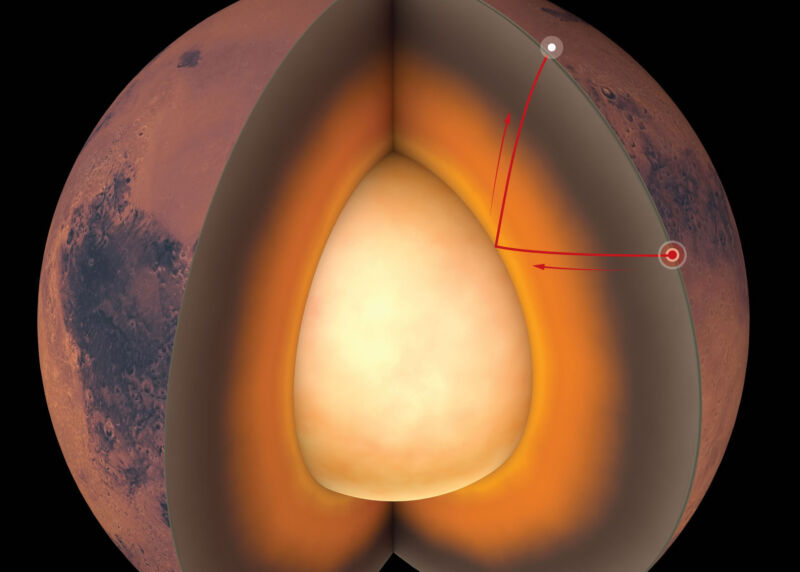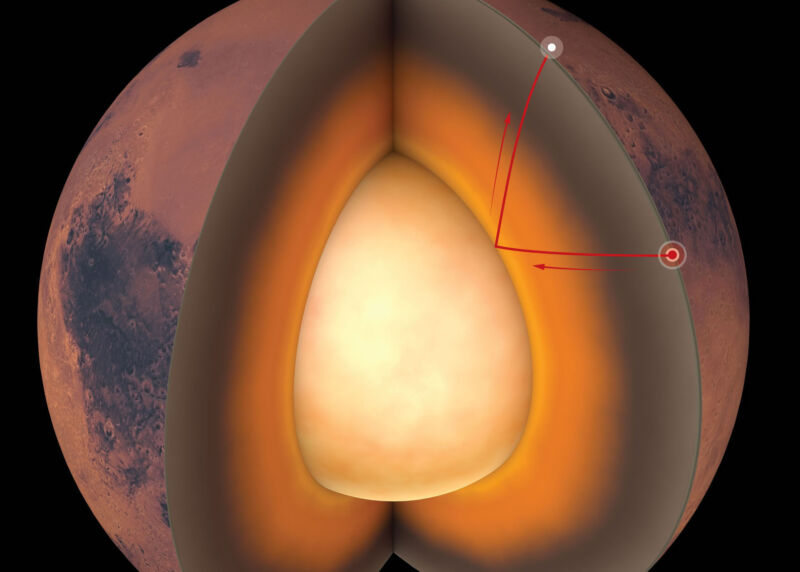
Enlarge / Some seismic waves bounce off Mars’ core before reaching the InSight lander. (credit: Chris Bickel / Science )
We’ve learned a lot about our planet’s interior simply by tracking how the seismic energy released by earthquakes moves through or reflects off the different layers present beneath Earth’s surface. For over a Martian year, we’ve had a seismograph on Mars in the hope that it would help us to figure out the red planet’s interior.
But Mars is relatively quiet seismically, and we’ve only got a single seismograph instead of an entire network. Still, with records of a handful of significant marsquakes, we now have some sense of what Mars’ interior looks like. And a set of new studies indicates that it’s pretty weird, with a large, light core and an unexpectedly warm crust.




